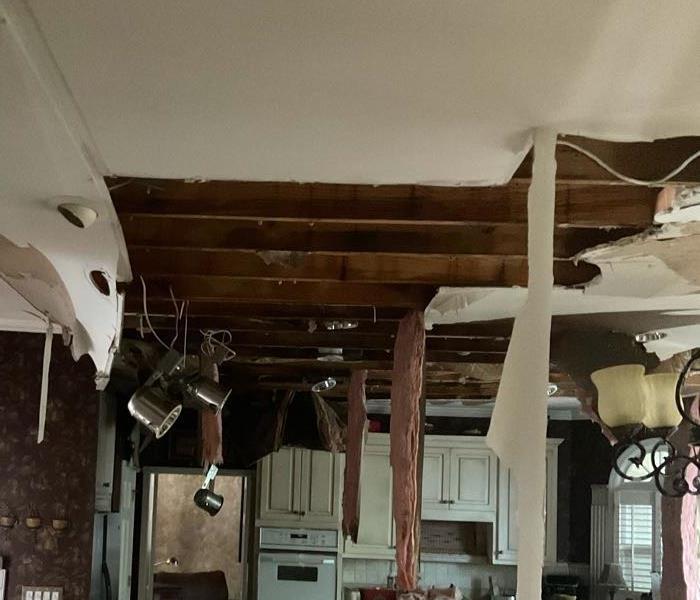Wet Drywall: The #1 Guide To Follow For Drywall Damage
12/8/2021 (Permalink)
Wet drywall can cause severe structural issues when left untreated.
We all know how important it is to have a strong foundation for a building to stand strong and tall. A strong structure should still stay strong when natural disasters occur, but that doesn't mean that you can just let damages sit. For example, when you encounter water damage in your home or business, you will need to act quickly before structural issues begin to develop.
In the following blog post, we will focus on drywall and the importance of addressing wet drywall as soon as possible. You will want to read until the end to see the answers to the most common water damage and drywall questions we receive.
A deeper look at wet drywall
Wet drywall is a condition that happens when water seeps behind the drywall and starts to saturate the gypsum core. As a result, the drywall will begin to swell and eventually fall off the wall.
The most common way for wet drywall to occur is from leaks in the roof, pipe bursts, or flooding. It is important to note that water damage is not only something that needs to be addressed but must be done right away. The longer the water sits, the more structural damage it will cause.
Signs of wet drywall:
- Musty odor
- Dark spots on the wall
- Dropping ceiling tiles
Does wet drywall always need to be replaced?
No. There are instances where a water restoration company will professionally dry out the drywall instead of replacing it. However, it will be essential to have the drywall replaced for water damage that falls under category 3.
How long before the wet drywall turns into mold damage?
Within as little as 48 hours, the water damage can turn into black mold. Therefore, it is crucial to address any water damage as soon as possible to prevent any long-term damage.
What to do when there is wet drywall?
Wet drywall restoration is a multi-step process and requires fast action to prevent further damage from being done.
The first step in this process is to locate the source of the water damage and stop it from causing more damage.
The next step is to remove any standing water using a wet/dry vacuum or pump. Once the water has been removed, you will want to start drying out the affected area. The professionals at SERVPRO find it best to use air movers and dehumidifiers to ensure that the area is completely dry.
It is essential to keep in mind that these steps should only be attempted by someone who has had experience with water damage. Call a water restoration professional with qualified expertise and certifications rather than an untrained contractor.
The right professionals will know how to diagnose the issue and quickly address it to minimize further damage. It usually will take about 3-4 days for wet drywall to dry out using a dehumidifier and air movers.
If you are experiencing this problem, call SERVPRO of Downtown Atlanta for help!
We hope you enjoyed learning about wet drywall and the importance of taking care of it as soon as possible. When it comes to water damage, the professionals at SERVPRO of Downtown Atlanta are the best in the game! All of our professionals are certified by the IICRC and have years of experience in water damage restoration. We are here to help you take care of any water damage issues that may occur in your home or business!
If you have any water damage restoration questions, please do not hesitate to reach out to us!




 24/7 Emergency Service
24/7 Emergency Service
